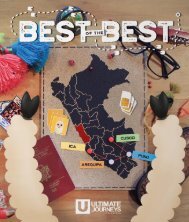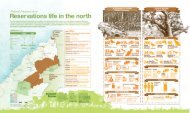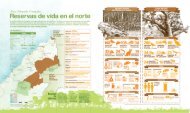UJ #14 - Qhapac Ñan
Create successful ePaper yourself
Turn your PDF publications into a flip-book with our unique Google optimized e-Paper software.
The Peru-Bolivia Binational Trek is an example<br />
of the unity generated by the Qhapaq <strong>Ñan</strong>.<br />
Qhapaq <strong>Ñan</strong> Project’s National Office<br />
What benefits is receiving each country?<br />
The most important benefit is the international<br />
positioning that increases the flow of visitors and is<br />
essential for the economic and social development of<br />
the nearby areas. This will allow boosting the tourist<br />
potential of the Qhapaq <strong>Ñan</strong> in areas outside the<br />
traditional Cusco route.<br />
The countries with listed heritage sites belong to<br />
a global community concerned about maintaining<br />
these assets, they gain access to the World Heritage<br />
Fund that provides economic support to remediate<br />
damages caused by natural disasters and to the signing<br />
of international agreements for the conservation and<br />
protection of the sites.<br />
Finally, a mention of this type involves raising further<br />
awareness in the public in favor of the heritage<br />
and, consequently, the commitment of government<br />
authorities and communities to protect their legacy<br />
and find forms of sustainable development that<br />
benefit them.<br />
The Qhapaq <strong>Ñan</strong> today<br />
Rather than perceiving it as a topic of the past, the Qhapaq<br />
<strong>Ñan</strong> is the tool to talk about a “new history” without borders,<br />
which highlights the diversity among the six countries<br />
but does not prevent them from coexisting in the same<br />
territory. The meaning of this trail goes beyond being a<br />
mere road that connects the Tahuantinsuyo, but it has a<br />
great transformational and unifying potential.<br />
Its functional nature and the fact that it continues to be<br />
currently used as a means of communications, allows<br />
raising awareness of a public space that can be enjoyed<br />
and used by the citizens. “The Qhapaq <strong>Ñan</strong> is not really<br />
about the Incas, but about the present. We can use it to<br />
create stories of who we are today, what is our relationship<br />
with the people and how we allow them to enjoy a heritage<br />
that belongs to all of us,” highlighted Marcone.<br />
21

















